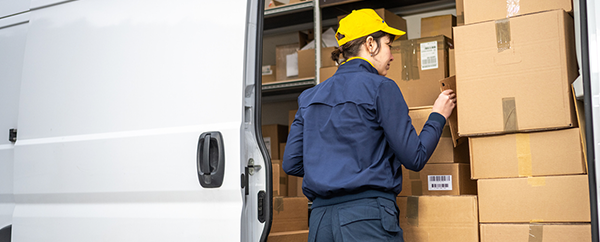
As you know, key to your goods arriving safely is how well you’ve packed them, so we’ve created a checklist of sorts to remind you of best packing tips, particularly when using the U.S. Post Office as your shipper.
The Box
Choose a box with enough room for cushioning material around the contents. Sturdy paperboard or corrugated fiberboard boxes are best for weights up to 10 pounds. If you are reusing a box, totally remove or obliterate all previous labels and markings with heavy black marker.
Where to Find Boxes
You can purchase boxes and tubes of various sizes at most Post Offices. Priority Mail Express and Priority Mail boxes are available free at the Post Office for items sent using either of these services. While you are not required to use the free packaging for these services, you must use the USPS-produced address label provided by the Post Office for Priority Mail Express. To order Priority Mail Express or Priority Mail boxes at no extra charge, call 1·800·222·1811 or visit www.usps.com/store.
Cushioning
Place the cushioning all around your item or items. You can use newspaper, foam peanuts or shredded paper. Close and shake the box to see if you have enough cushioning. If you hear items shifting, add more cushioning.
Placing an extra address label with the delivery and return addresses inside the package will ensure that the item can be delivered in case the outside label becomes damaged or falls off.
Wrap items in plastic bags to prevent water damage in the event the box is left outside in inclement weather.
Mailing Fragile Items
Use foamed plastic or padding to protect your items, placing the cushioning inside hollow items as well. Careful packaging is the best way to safeguard your valuable items against damage.
Mailing Heavy Items
If you are mailing a very heavy or very dense item, start with a sturdy box, pack the contents securely with a strong material for bracing to prevent shifting, and tape all the edges with reinforced tape. Packages heavier than 70 pounds cannot be mailed.
Sealing
Tape the opening of your box and reinforce all seams with 2-inch-wide tape. Use clear or brown packaging tape, reinforced packing tape, or paper tape. Do not use cord, string, twine, masking or cellophane tape. Place a strip of clear packaging tape over your label to prevent the address from smearing.
Delivery Address
Do not use commas or periods. Use correct abbreviations. Make sure the shipping label is securely attached with high-quality adhesive labels. Protect both the delivery address and the return address from water damage and smearing with clear packaging tape.
(Source: http://pe.usps.com/text/dmm100/preparing-packages.htm)
International Considerations
To minimize delays and problems when shipping internationally, make sure the item you are shipping is allowable through customs in the destination country.
Prohibited Items
Go to http://pe.usps.com/text/imm/immctry.htm and select the destination country for specific prohibitions.
Prohibited Recipients
Mailers may not send items to certain countries or to a “blocked person.” Blocked persons include individuals and entities (regardless of the mailing destination) that are listed on the OFAC Specially Designated Nationals (SDN) list available online at https://www.treasury.gov/resource-center/sanctions/SDN-List/Pages/default.aspx.
Please note: Parcel Insurance Plan does not insure loss, damage or non-arrival of any package or its contents which is addressed, wrapped or packed insufficiently, incorrectly or contrary to carrier’s packaging requirements, nor seizure or destruction under quarantine or Customs regulations, confiscation by order of any government or public authority or risks of contraband or illegal transportation of trade.

